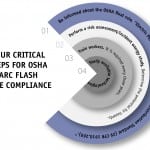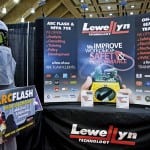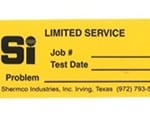An arc flash is the explosive energy released when an electrical fault causes an arc. This rapid release of energy causes excessive temperatures in addition to air and metal in the path of the arc expanding and exploding—leading to flying debris, sound, ultraviolet radiation, and emission of dangerous gases.
It is important that power generation facility managers, along with maintenance and operations staff, understand how power systems perform during abnormal fault conditions to advance personnel safety and system reliability. It is also particularly critical for nuclear power generation facilities to understand the potential impact of these events on safety-related equipment.
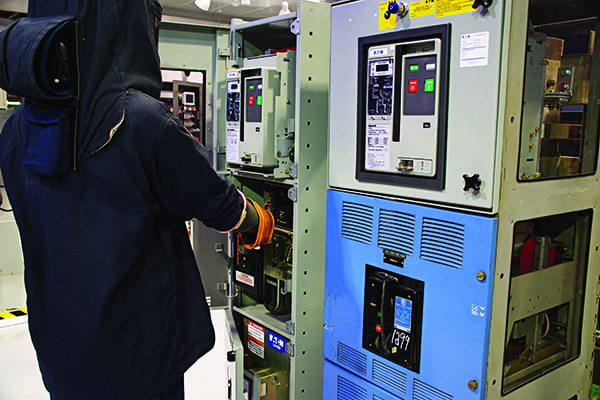 |
|
1. If it is necessary to work on energized equipment, workers must dress for safety and code compliance. The latest research, based on rigorous testing, is reflected in the updated IEEE 1584 guide. Courtesy: Eaton |
What level of personal protective equipment (PPE) should be worn for safety? Justified work on energized electrical equipment will occur under various circumstances and electrical workers must dress for safety and code compliance (Figure 1). They need guidance based on the relevant codes and standards, and real-time data to help them perform necessary maintenance in a safe manner.
Damage and Downtime
Arc-flash events can cause extensive damage and downtime. In the event of an arc-flash event, facility managers cannot simply drive to the closest big-box retailer to procure a new motor control center, switchgear, or other electrical distribution equipment. Instead, it could take months to manufacture, ship, and install new equipment. In the meantime, downtime translates directly into lost production and can have a negative impact on the bottom line.
Further, it is important to understand the impact of arc-flash events on safety-related equipment for power generation facilities, especially nuclear power facilities. The challenge is not only when safety-related equipment experiences an arc-flash event, but also the proximity and extended damage to safety-related equipment even in the case of an event in equipment that is not safety-related. When an arc-flash event occurs, the area of impact could extend to other equipment.
The electrical industry, especially nuclear power generators, is impacted by these types of events and is driving change in how equipment is designed and installed. For example, an event at the Browns Ferry nuclear plant in Limestone County, Alabama, in March 1975 changed how nuclear power facilities are designed.
A major cable fire in the cable-spreading room occurred at Browns Ferry, and more than 600 of the burned cables contained circuits for the safe shutdown of one or both of the two operating reactors. The capital loss in this event was $10 million, plus $200 million to pay for the supplemental electricity from other sources during the 18 months of downtime, according to the U.S. Nuclear Regulatory Commission (NRC) and the Johns Hopkins APL (Applied Physics Laboratory) Technical Digest.
Arc-flash events, as shown by the Browns Ferry incident, are very destructive. Lessons learned from real-world events and research have changed the power generation industry in many ways.
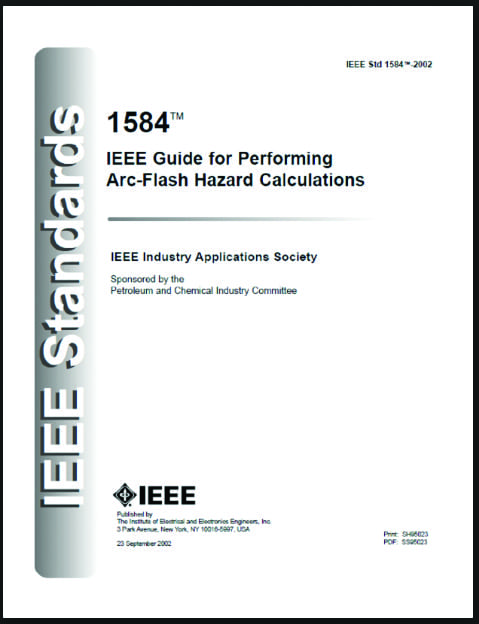 |
|
2. The IEEE 1584 “IEEE Guide for Performing Arc-Flash Hazard Calculations” is the world’s most widely accepted document in quantifying the incident thermal energy and the arc-flash boundary associated with arcing faults. This is the cover of the initial document released in 2002. Courtesy: IEEE |
The latest technical information on arc flash, incident energy, and high-energy arc flash (HEAF) is important for anyone in a power generating facility, whether it is a fossil fuel, nuclear, or alternative-energy generating application. There are multiple research efforts globally on this topic but two particularly stand out. The first is the research and development for the IEEE 1584 standard titled “IEEE Guide for Performing Arc-Flash Hazard Calculations” (Figure 2). The NRC is conducting the second. Recent events experienced within the nuclear industry are generating more research and discussion around this topic to further understand HEAF events.
Understanding Recent Updates to IEEE 1584
The IEEE 1584 guide has been and continues to be the world’s most widely accepted document in quantifying the incident thermal energy and the arc-flash boundary associated with arcing faults. The document is supported by more testing than any other standard.
IEEE 1584 was initially released in 2002 and based upon testing that was conducted to generate equations that the industry uses to calculate incident energy. (Incident energy is defined as the amount of energy, at a prescribed distance from the equipment, generated during an electrical arc event. It increases as the magnitude of current flowing in the fault and clearing time increase.) The industry was eager to wrap its head around this topic of incident energy to help all power generators understand how to prepare for, or hopefully mitigate and reduce the impact of, incident energy events. Most recently, more research has been conducted and a new IEEE 1584-2018 was released last year.
The latest research is based on nearly 2,000 additional tests and again showed that arc-flash analysis is not yet an exact science. These new formulas, based on varying field conditions, have been developed to establish an improved calculation model. Rigorous testing resulted in more variables, which means there will be more decisions required of qualified persons performing arc-flash studies.
Arcing Currents Increasing in Magnitude
An Eaton analysis indicates that arcing currents are increasing in magnitude as well as incident energy values. With the increase in arcing currents, there is a better chance of decreased clearing times resulting in lower incident energy values (Figure 3). Faster clearing times could be achieved with higher arcing currents because the higher currents have a better likelihood of being in the instantaneous region of circuit breakers or the current-limiting region of fuses.
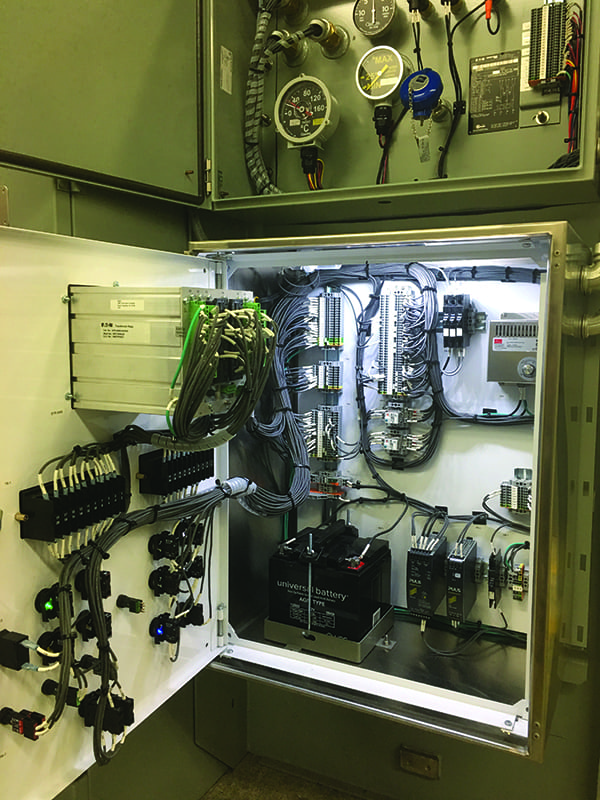 |
|
3. Active arc flash mitigation systems detect arcing and clear faults much faster than traditional approaches. For example, Eaton’s Arc-Reduction VFI (Vacuum Fault Interrupter) transformers, shown here, integrate powerful intelligence and secondary sensing to dramatically reduce incident energy in downstream equipment, enhancing safety when work on energized equipment is necessary. Courtesy: Eaton |
The higher incident energy (calories per square centimeter) values are impacted by a few key data points, including the configuration of the electrodes and the size of the enclosure within which the arcing event occurs. The latest research is helping the industry better understand this phenomenon.
The importance of the type of equipment and configuration of bus work impacts incident energy. For example, the two critical parameters of bus orientation and enclosure size could be more difficult to ascertain on older equipment than for newer equipment, but tools for success are available.
The industry is acting quickly to respond. The tools being used, including system-modeling software applications, have been updated to implement the latest that IEEE 1584 has to offer. Manufacturers are also working to help the industry understand some of the key parameters associated with equipment that are important to determining arcing currents and incident energy.
Improved modeling for outdoor applications (up to 15 kV) is especially important for utilities. IEEE 1584-2018 now offers improved modeling for outdoor utility equipment by means of new electrode configurations such as vertical electrodes in open air (VOA) and horizontal electrodes in open air (HOA). These better represent the conditions of these higher voltage applications.
But it is important to remember that utility generating plants have similar power distribution systems to many other industrial facilities and the rest of what IEEE 1584-2018 details still applies. Understanding incident energy throughout a facility is important for safety and reliability. The IEEE 1584-2018 equations provide a method to analyze the system and determine incident energy.
High-Energy Arc-Flash Research
Arc-flash events in the U.S. and around the world have accelerated research around HEAF events. HEAF events have occurred in both U.S. and foreign nuclear power plants. The nuclear utility industry realizes that HEAFs have the potential to cause extensive damage to electrical equipment, adjacent equipment, and cables. This significant energy release can act as an ignition source of nearby combustibles, resulting in fire, and could potentially affect the performance of nearby structures, systems, and components important to safety.
The test plan for HEAF events covered a series of small-scale enclosure tests sponsored by the NRC Office of Nuclear Regulatory Research (RES) and performed at Sandia National Laboratories (SNL). The effort and testing are well-documented and are available to a wide audience. Power generators can learn much from any research conducted in this area.
Safety by Design
With all the data and tools available to the industry, the industry can do a better job of understanding, planning, and designing systems for what can be expected if an event occurs. The tools and technology are available to mitigate those events through system-design principles that help engineer the event out of the equation.
The following areas are critical considerations to reduce the damage associated with the release of energy in a power system:
■ Current-Limiting Overcurrent Protective Devices. Fuse and circuit-breaker solutions reduce energy when the arcing current is in the current-limiting region of the device.
■ Arc-Reduction Maintenance Switch. The ability to turn a switch when justified energized work is being conducted, placing the arcing current in the fast-acting region of the overcurrent protective device.
■ Active Arc-Flash Mitigation Systems.New arc-quenching switchgear can dramatically reduce the incident energy available and extinguish an arc more than 10 times faster than traditional approaches, enabling switchgear to withstand an arc-flash event with minimal or no damage.
■ Arc-Resistant Equipment. Equipment that contains and channels the energy in a planned direction should an event occur within.
■ Remote Operation. Whether through network communications or through use of umbilical cords, opening and even closing overcurrent protective devices remotely helps place personnel in safe areas.
■ Insulated Equipment. Insulated bus within equipment helps reduce the likelihood of an event.
■ Equipment Barriers. Added barriers within equipment to cover exposed energized parts can help reduce the likelihood of an event by reducing the likelihood of incidental contact.
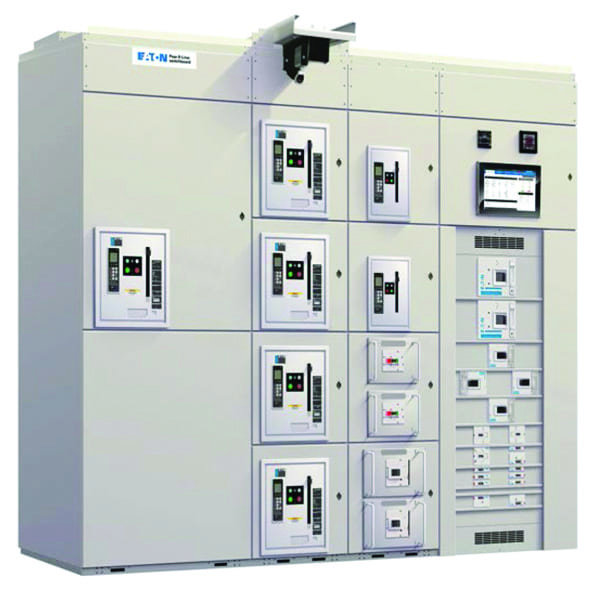 |
|
4. Power Defense circuit breakers equipped with Eaton’s Arcflash Reduction Maintenance Switch technology help reduce incident energy when energized work needs to occur. Eaton’s Power Xpert Dashboard Lite (PXDBL), shown here, interacts with low-voltage panelboards and switchboards in a variety of applications. Courtesy: Eaton |
Technology exists (Figure 4) to recognize an event is occurring and reduce the clearing time so that the event does not produce the damage historically associated with the fault. Sometimes the solution is as simple as selecting a standard overcurrent protective device, so that the system becomes inherently current-limiting and sometimes the solution is more complex.
Understanding how power systems perform during a fault condition, and the relevant codes and standards, is crucial to advance personnel safety and system reliability. ■
—Thomas A. Domitrovich is an electrical engineer within Eaton’s electrical business. He sits on the National Fire Protection Association (NFPA) Code Making Panel 2 for the continued development of the National Electrical Code (NFPA 70).







